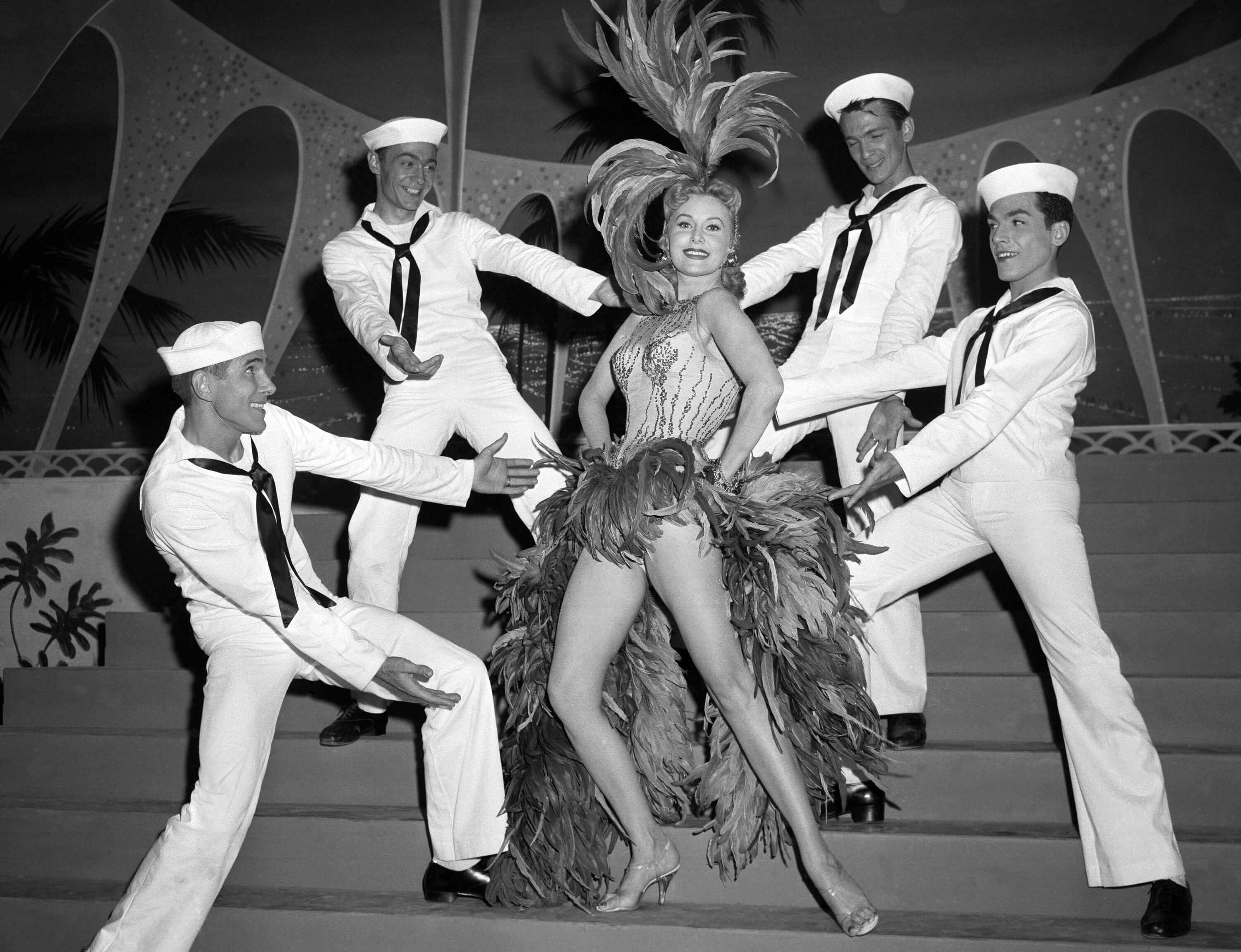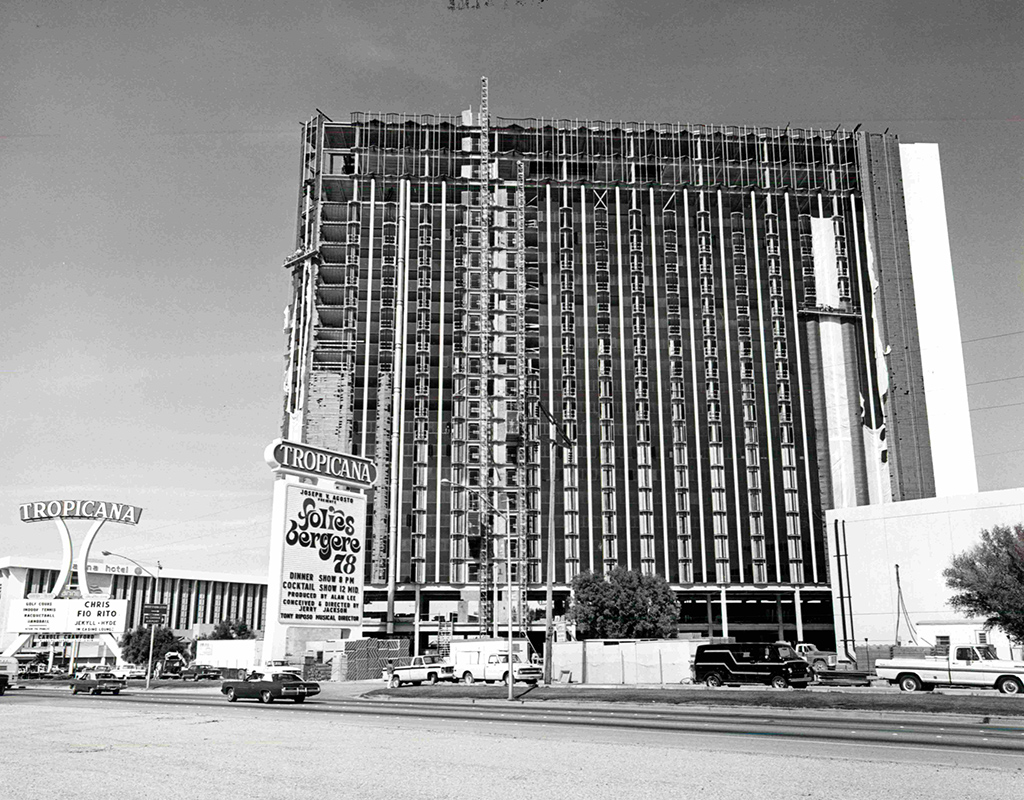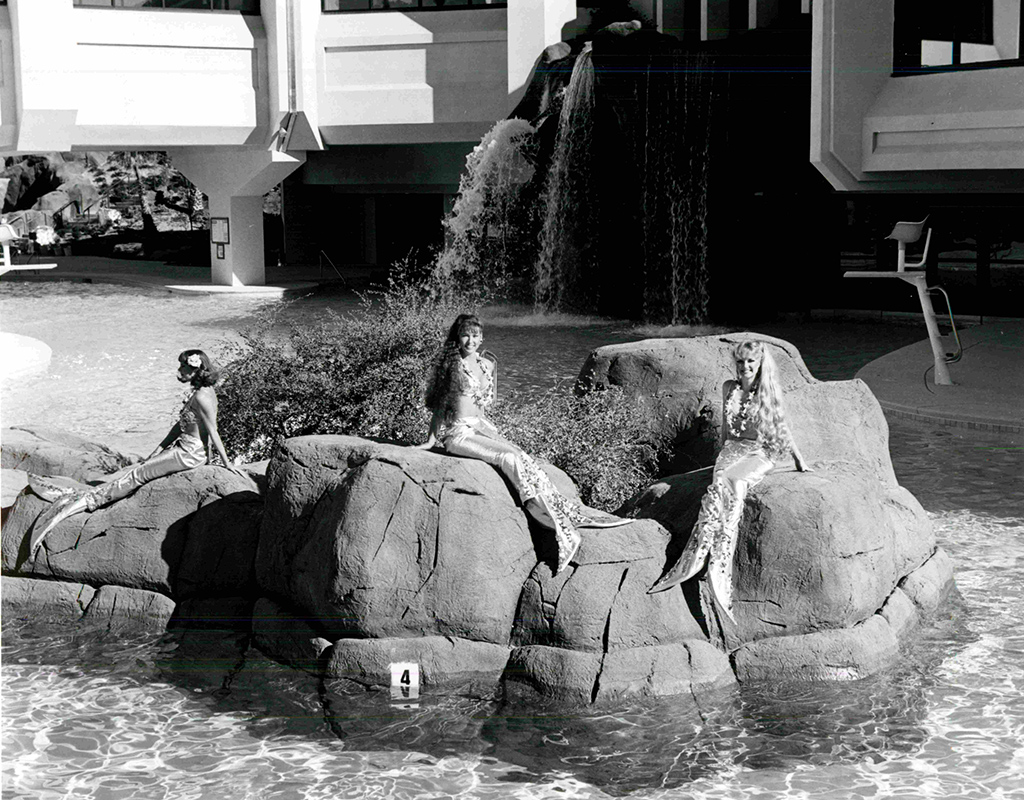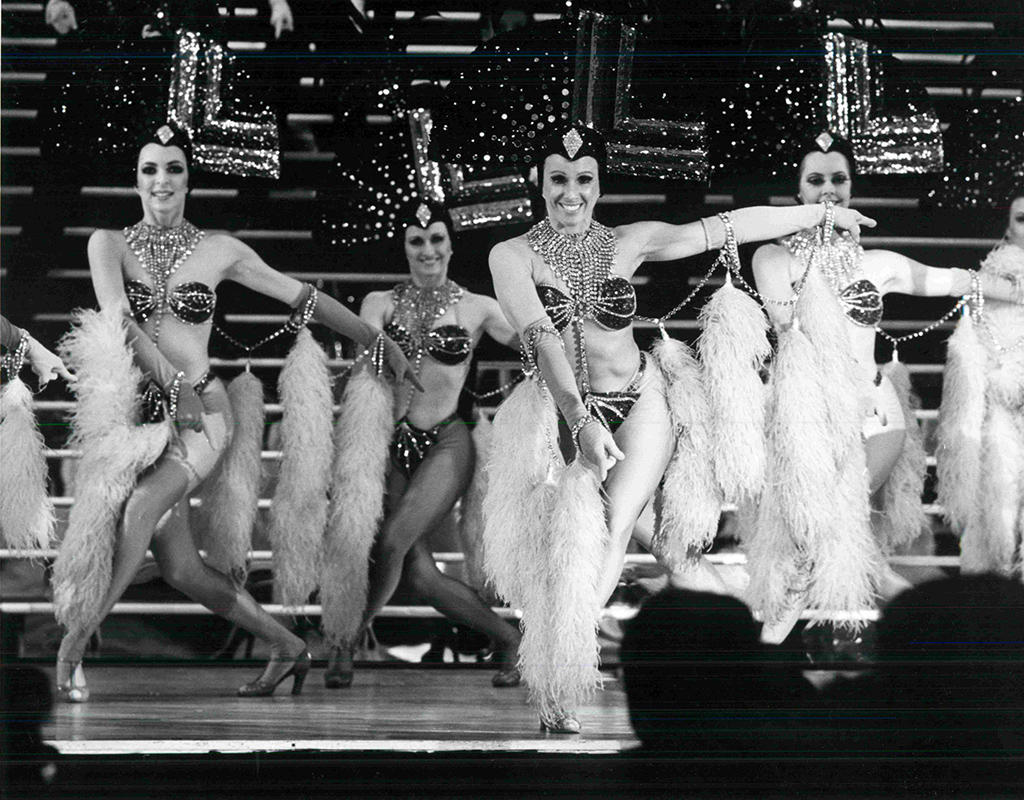The mirrored, million-dollar canopy remains as it always was; the same can’t be said of the surroundings reflected in its silvery depths.
Gaze up at the domed, stained-glass ceiling that brightens the Tropicana casino floor with Art Nouveau-inspired elegance, and you’ll see a different hotel looking back at you than when said ceiling was constructed in 1979 with a reported seven-figure price tag.
Once among the most upscale properties on the Strip, a gilded treasure box of showgirls and celebrities, a destination spot in a destination city, the Trop courts a different clientele these days.
Gone is the original showroom, where Folies Bergère dancers high-kicked to the chandeliers for decades, Muhammad Ali held public training sessions for his fight against Ron Lyle in 1975 and live tigers once roamed the stage. In its place, a pair of curving escalators and an abundance of open space informed with a palpable sense of emptiness on a recent Friday afternoon.
It’s check-in time at the Trop, new arrivals clutching cans of beer and inflatable inner tubes as they make their way to their rooms, favoring cargo shorts and denim over the designer duds once de rigueur here.
Some chill at the Chill’M bar, where a $52 slushy and 100 oz. cocktails could freeze every brain in the house.
A man in a camouflage ballcap and a T-shirt that reads “Permanently Tired” plays a penny slot machine amid a color-intense landscape of orange floral carpeting and plastic flowers in red planters festooned with bamboo.
Outside, a lone duck swims in a waterfall-fed fountain near the swimming pools — all but one of which are vacant.
These may be some of the last days of the Tropicana.
The Oakland A’s have entered a binding agreement with the owners of the property to build a $1.5 billion, 30,000-seat ballpark on the site. For the project to move forward, the Nevada Legislature must pass a bill that provides up to $380 million in public financing. If that happens, the Trop could soon go the way of the Stardust, the Dunes, the Desert Inn and other storied Vegas casinos imploded into the history books.
Should the Tropicana be reincarnated into a baseball stadium, though, it’ll leave behind a rich legacy as one of the casinos that helped usher in a glamorous new era for the city a little over six decades ago, helping Vegas go from kitschy to cosmopolitan — at least in some quarters — from a little corny to cool enough to get shout-outs from James Bond.
“It was a very high-end property that a lot of major stars frequented,” recalls Lorenzo Doumani, local real estate developer and CEO of Majestic Resorts, whose father Edward Doumani and uncle Fred Doumani owned the Trop for a time in the ’70s. “It was one of the prime destinations on the Strip. It really was iconic.”
“They called it ‘The Tiffany of the Strip,’” adds David G. Schwartz, ombuds and affiliate history professor at the University of Nevada, Las Vegas. “At the time, this is something that really defined Las Vegas.”
Or, as 007 himself once put it in “Diamonds are Forever”: “I hear the hotel Tropicana is quite comfortable.”
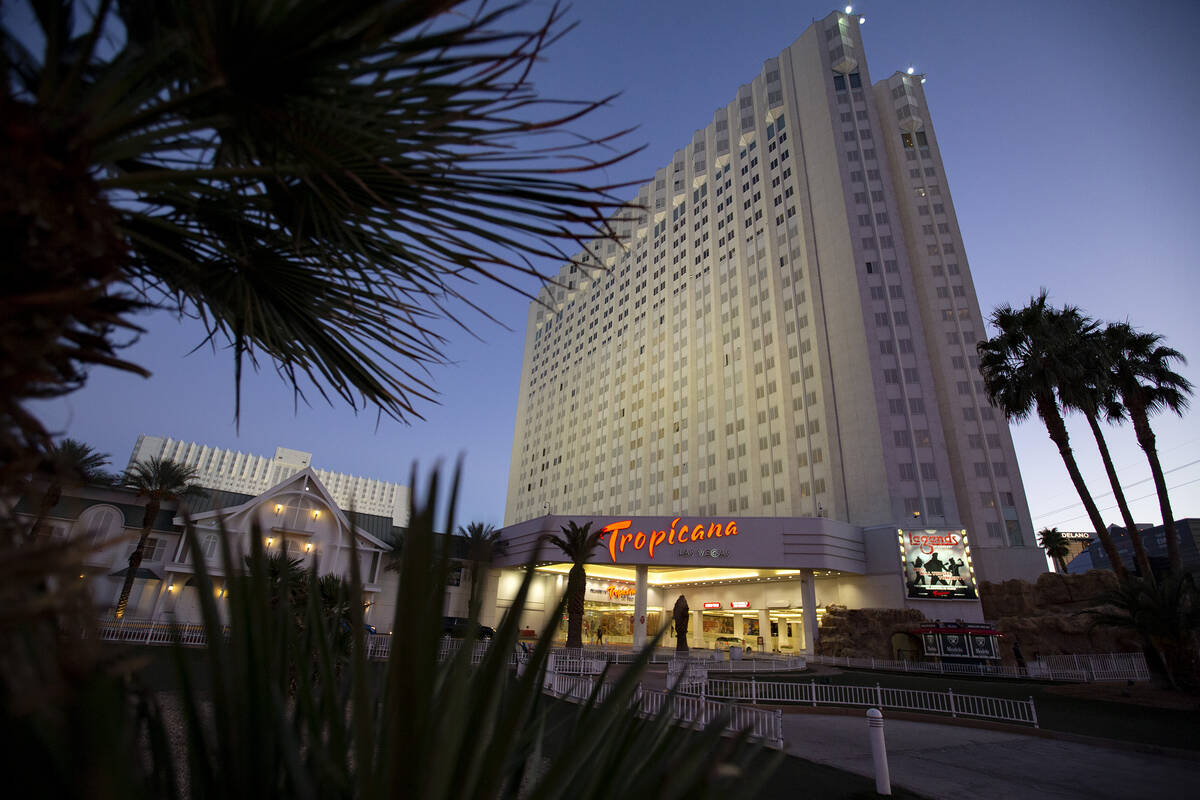
The ‘Mighty T’ debuts
“T-Day” arrived on April 3, 1957.
The occasion was anointed as such by the Review-Journal in a story on the Tropicana’s opening 66 years ago.
“Unlike many other hotels, the Tropicana introduces a true resort hotel, rather than a casino and nightclub with incidental rooms, and figures to attract a new type of clientele to Las Vegas,” the R-J wrote, dubbing the property the “Mighty T.” “The exquisite hotel combines lush luxury, extremely good taste, warmth, intimacy and” — here comes the kicker! — “functional efficiency.”
At the time it was constructed, the Tropicana was the most expensive casino ever built in Vegas, costing $15 million, topping the $10 million it took to complete the Riviera two years earlier.
Stars flocked to the Trop even before it opened to the public, with actress Debbie Reynolds celebrating her 25th birthday there alongside Tony Bennett, Sammy Davis Jr. and her singer-actor husband Eddie Fisher, an early performer at the hotel, on April 1 of that year.
The place was awash in swanky flourishes, from the Italian marble sculpture in the main lobby to the 60-foot, tulip-shaped fountain out front to the chic Gourmet Room, perhaps the earliest example of fine dining on the Strip, overseen by L.A. restaurateur Alexander Perino, foreshadowing the celebrity chef boom decades later.
“The Tropicana was the first to have a gourmet room,” Fred Doumani notes. “Before that, you just had a great coffee shop and a buffet. It was a very classy hotel.”
The Tropicana was conceived by hotelier Ben Jaffe, part owner of the Fontainebleau in Miami Beach, who purchased the land in 1955 and then initially leased the property to business associate Phil Kastel, who ran the Beverly Club casino in New Orleans and oversaw the building of the Trop.
Jaffe’s big idea was to create the finest hotel-casino in Vegas.
By all accounts, he succeeded.
“It’s the Taj Mahal of the American scene,” R-J columnist Les Devor gushed upon getting an early look at the “palace of pleasure” in September 1956.
And yet, a month after its opening the following spring, a would-be killing shed new light on the Tropicana’s dark ties.
The underworld uncovered in Vegas
The .38 caliber bullet was intended for Frank Costello’s brain.
It missed — barely, resulting in a scalp wound.
On May 2, 1957, the notorious gangster and member of the Luciano crime family survived a botched assassination attempt ordered by rival mobster Vito Genovese outside his New York City apartment.
Costello dismissed the attack as a “punk trying to get a reputation” for himself in the underworld, as reported in the R-J at the time.
But inside Costello’s coat pockets, police found a note detailing $651,284 in gross casino winnings at the Tropicana during its first 24 days of operation.
Phil Kastel — a long-time associate of Costello’s — had already been dropped from the Tropicana license at the final hearing before the gaming control board and removed voluntarily by the operators of the casino a month earlier due to his ties with the crime boss.
But tangible proof of Costello’s hand in the Tropicana till was an explosive development, a bombshell that detonated nationally, making headlines across the country.
Back then, the mob’s involvement in Vegas was strong — but still something of an open secret.
“The 1950s were a time in Las Vegas of a pretty dramatic growth for the mob involvement here,” explains Geoff Schumacher, vice president of exhibits and shows at The Mob Museum. “The mafia kicked off the decade with the Desert Inn hotel. They got involved in various ways with the Sands Hotel, the Riviera, the Dunes.
“The ‘50s were a time when there was a lot of hidden interest in casinos — both on the Strip and downtown,” he continues. “And the Tropicana was sort of following the lead of the rest of the predecessors.”
That hidden interest, though, became very public with the Costello incident.
“It was a situation where this revelation sort of validated, or gave some substance, to the rumors that had been circulating nationally and locally about the mob’s involvement in Las Vegas,” Schumacher says. “That’s a rare thing when you’ve got some actual concrete evidence.
“I think it did have a pretty significant impact on what followed,” he continues. “And what followed was a move towards a new gambling regulation apparatus in Nevada. You saw the development of the Nevada Gaming Commission and the Nevada Gaming Control Board — not necessarily directly following this revelation, but in conjunction with that. It definitely played a role.”
The mafia’s grip on Vegas was still tight, but the scrutiny that would follow from both state and federal officials would gradually begin to loosen it.
“The mob was doing very well in Las Vegas at this time,” Schumacher notes. “But there were cracks in the secrecy of what they were doing that were starting to show. People were starting to raise eyebrows.”
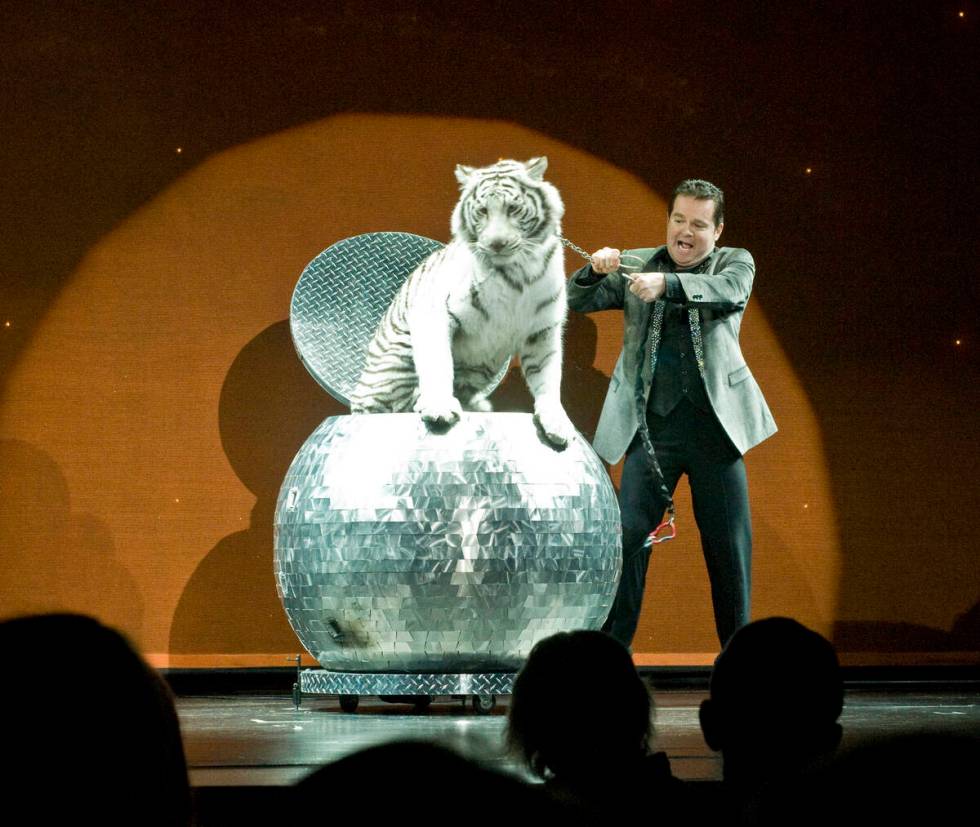
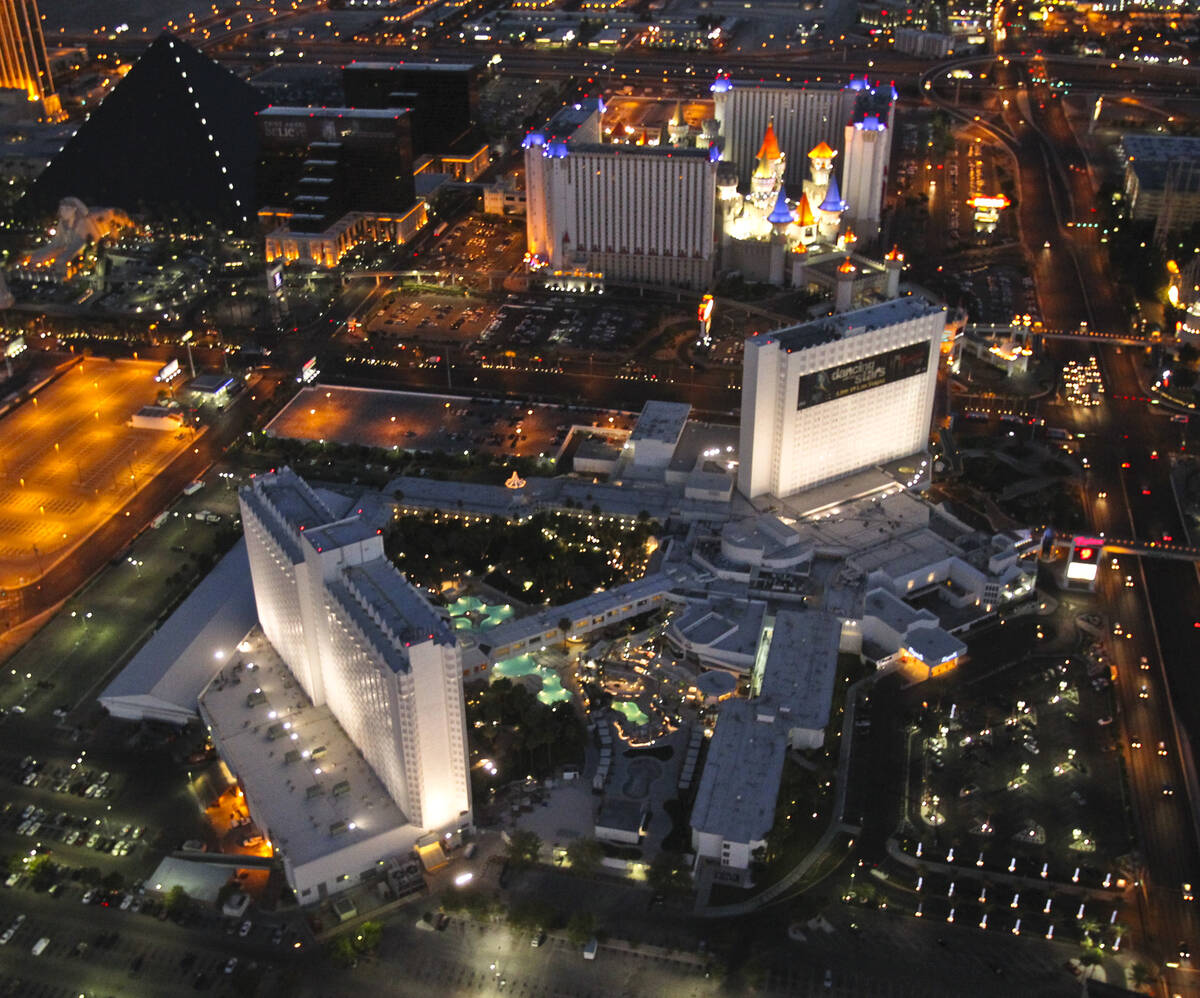
Lions, tigers and showgirls, oh my
It was the car on stage, a real-life Rolls Royce teeming with showgirls, all this exquisite craftmanship of steel and flesh alike, that really blew his mind.
It’s 1976, and Grant Philipo, future creator and curator of the Las Vegas Showgirl Museum, is visiting Vegas for the first time, taking in all the shows.
Among them: Folies Bergère, the Paris-born topless revue that debuted at the Tropicana in 1959.
“It was just an unbelievable show,” he recalls. “I came from Iowa, and I had seen incredible movies, but I’d never seen all these unbelievable things happen on a stage.
“Of all the shows that I saw — we saw all of the lounge shows, all of the main shows — the classiest show in Las Vegas in 1976 was at the Tropicana.”
Folies Bergère wasn’t the first showgirl-based production in Vegas — Lido de Paris opened at the Stardust the year before its premiere — but with its crazy lavish set designs, famed, skirt-hiking can-can dancers and lion-sized production values (sometimes featuring actual lions), it was pivotal in making showgirl culture synonymous with this city.
To this day, Folies Bergère stands as the city’s longest-running show, spanning nearly 50 years and over 29,000 performances before closing in March 2009.
Beyond the showgirls, Folies featured a variety of other performers, from dancers to acrobats to tiger wranglers and illusionists: It’s where Siegfried & Roy made their Vegas debut in 1967 and magician Lance Burton did the same 15 years later, his contract renewed for a record nine straight years afterward.
“It was a very impressive show, a big show with a lot of production value,” Burton recalls of Foiles, which brought him to town after show producers saw him perform on “The Tonight Show” in 1981. “There were maybe 70 or 80 people on stage.

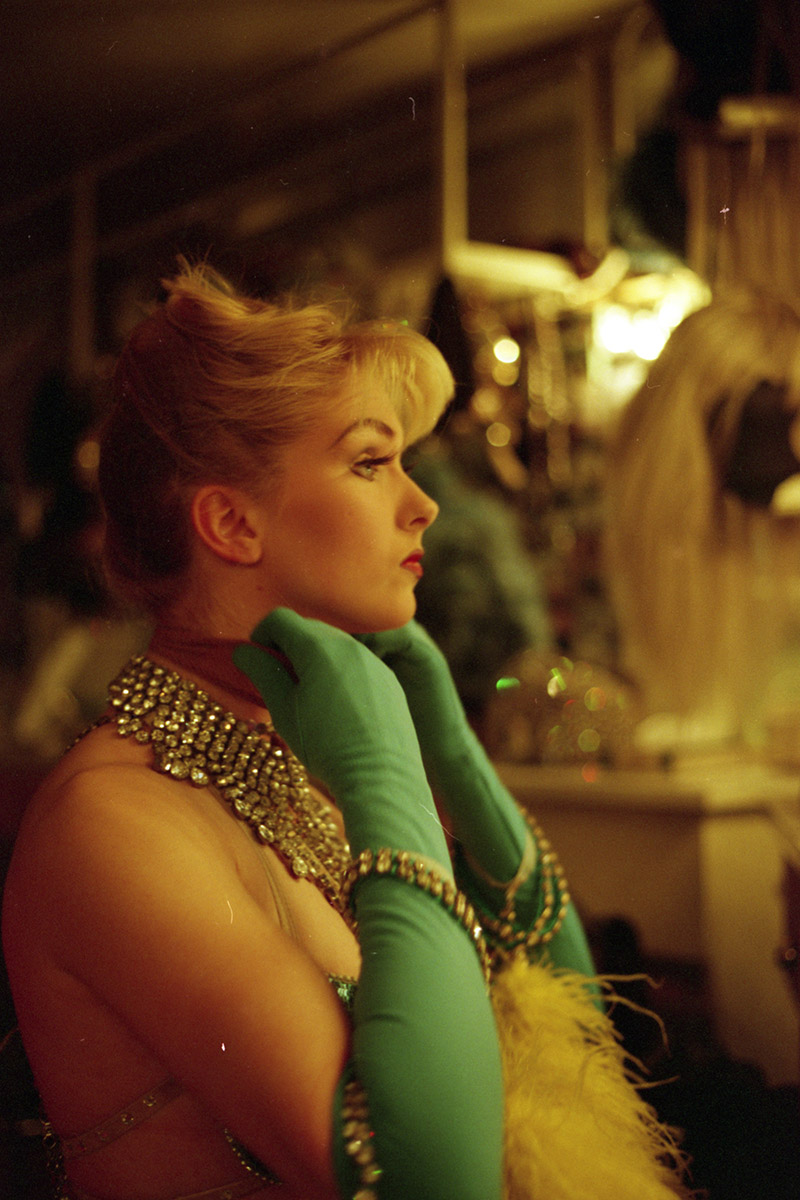
Showgirls from "Folies Bergere" getting ready for a show in their dressing room at the Tropicana hotel and casino in November 1997. (Review-Journal File Photo)
“The Tropicana was a big part of the entertainment scene,” he continues. “The Folies Bergère was the premier French revue show in Las Vegas — and maybe the world.”
One of the things that distinguished Folies was its gorgeous, authentic, more-rhinestones-than-thou showgirl costumes, many of which were originally imported from France.
Back then, when a show came to the U.S. from another country, its producers were required to either pay an import tax on all the items featured in the production, which was extremely cost prohibitive, or ship everything back home when the show’s run was over, which was also very expensive.
A third option locally?
“By law, (shows) were supposed to pack up all the costumes, the sets, the jewelry — all of that — haul it out to the desert with IRS agents and burn it all,” Philipo explains. “That’s what they were supposed to do — and in many cases, that is exactly what ended up happening, as sad as that is.
Folies was a little sneaky, though, in the early days.
“They would go and buy cheap, crappy costumes from, like, toy stores or wherever they could find them,” Philipo explains. “They would box them up, and the IRS agents didn’t know what was what. And so they would just pile it all up in the desert and burn all this crap, but they would keep all the really good stuff that was made in Paris.
“You know Vegas,” he chuckles, “it’s always been a little crooked.”
Speaking of which…
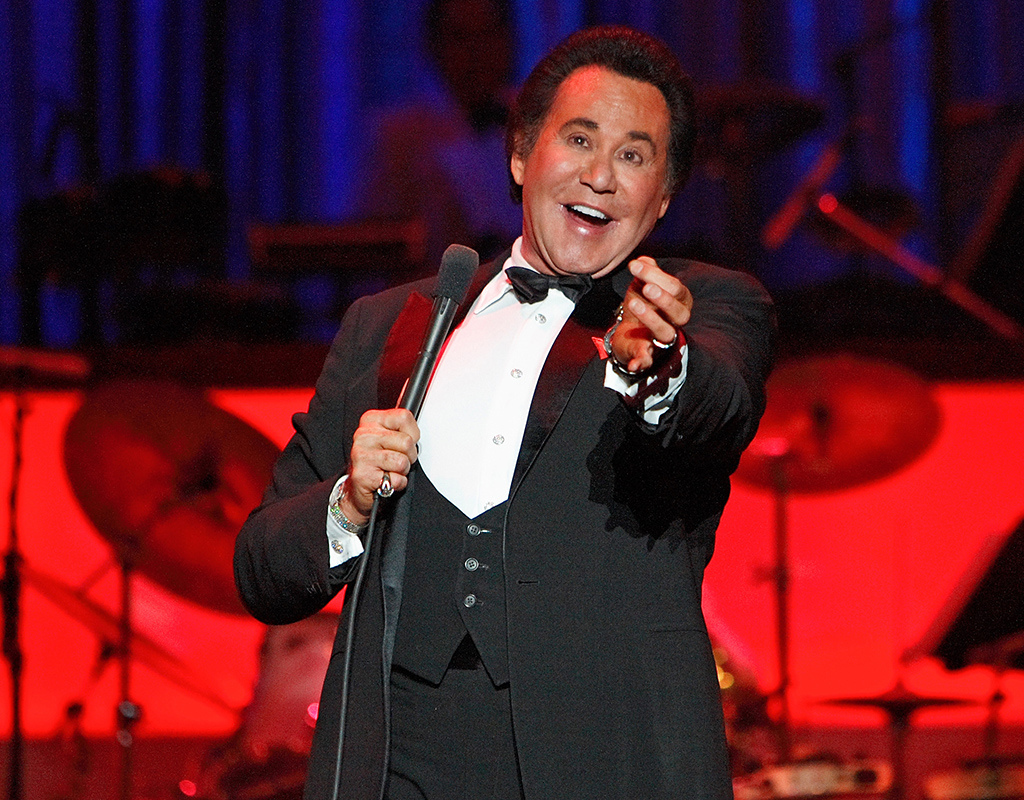 Wayne Newton performs during the opening night of his limited-engagement production 'Once Before I Go' at the Tropicana hotel-casino October 28, 2009.(Duane Prokop/Las Vegas Review-Journal)
Wayne Newton performs during the opening night of his limited-engagement production 'Once Before I Go' at the Tropicana hotel-casino October 28, 2009.(Duane Prokop/Las Vegas Review-Journal) 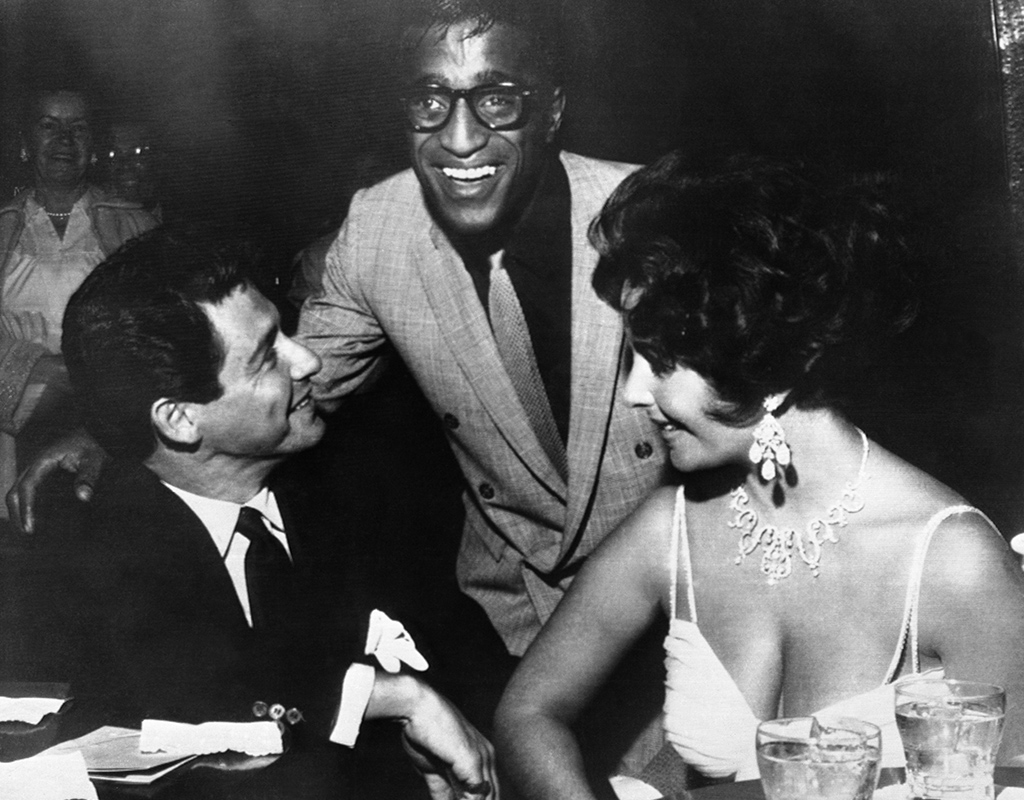 Elizabeth Taylor, right, and Eddie Fisher, left, discuss wedding plans with Sammy Davis, Jr. shortly before dawn at the Hotel Tropicana, April 2, 1959.(AP Photo)
Elizabeth Taylor, right, and Eddie Fisher, left, discuss wedding plans with Sammy Davis, Jr. shortly before dawn at the Hotel Tropicana, April 2, 1959.(AP Photo) New era, old ties
Among Folies Bergère’s most ardent supporters?
The Kansas City mob.
In the mid-’70s, they installed mafia associate Joe Agosto as executive producer of the show.
”Now, Joe Agosto didn’t know anything about dancing or singing or performing anything,” Schumacher says. “It was a front job for him: he oversaw the skimming of money from the Tropicana for the Kansas City crime family.”
In 1979, Agosto was caught on an F.B.I. a wiretap discussing his dealings at the Trop.
“He became a government witness after that,” Schumacher says. “He basically blew the top off what was going on there.”
Agosto would plead guilty to a $280,000 skimming conspiracy before dying of a heart attack in federal custody in 1983. Mafia members would also get busted for their involvement with the Stardust around this time.
The sun was setting on the mob’s day in Vegas.
“I think that at the time, the late ‘70s, when you had the bust of the Tropicana, and the indictments that followed, and then the bust of the Stardust, and the indictments that followed there, the writing was on the wall that the mob was no longer welcome in Las Vegas,” Schumacher says, “and that they were not going to stand much of a chance of any kind of sustained influence on the Strip. The world was changing on them — and Las Vegas was changing.”
The Tropicana went through plenty of changes of its own during this era.
Edward and Fred Doumani bought the lease to the Trop in 1974, becoming half-owners three years later when construction began on the casino’s first tower.
In subsequent decades, the property switched ownership on numerous occasions, including last September when Bally’s officially closed on its purchase of the Trop.
Though so much development has taken place around the Tropicana since it first opened its doors surrounded by a whole lot of nothing, there was a time in the late ’50s — back when Route 91 still doubled as Las Vegas Boulevard — that the casino marked the beginning of the south end of the Strip .
“It was the first hotel as you came in, as you drove down that two-lane highway,” Doumani remembers.
As such, it served as a luxurious, fitting introduction to a then-new era in Vegas, an era of heightened opulence and sophistication, of next-level live entertainment, of two-story hotels giving way to high-rise casinos, an era that the Trop played a direct role in catalyzing, an era that endures.
Back then, the Tropicana represented a sea change.
Sixty-five years later, it still does — even if that means eventually succumbing to the very thing it once embodied.
“The Tropicana was the most beautiful hotel — not because I owned it — but it really was beautiful,” Doumani says, his words emphasizing a past tense that will soon be standard when referencing the property in question… “It was really a great symbol of Las Vegas.”
Contact Jason Bracelin at jbracelin@reviewjournal.com or 702-383-0476. Follow @jbracelin76 on Instagram



